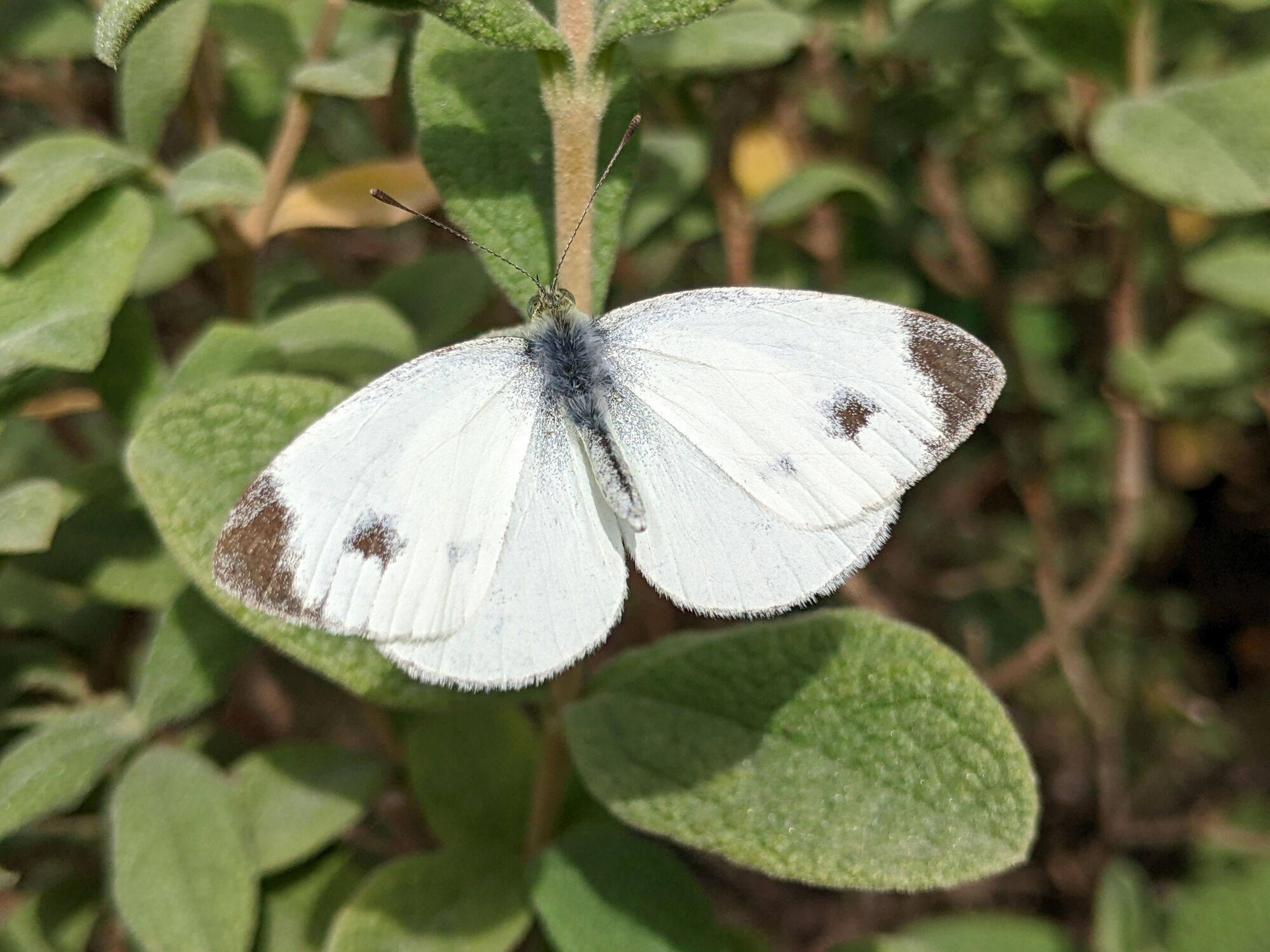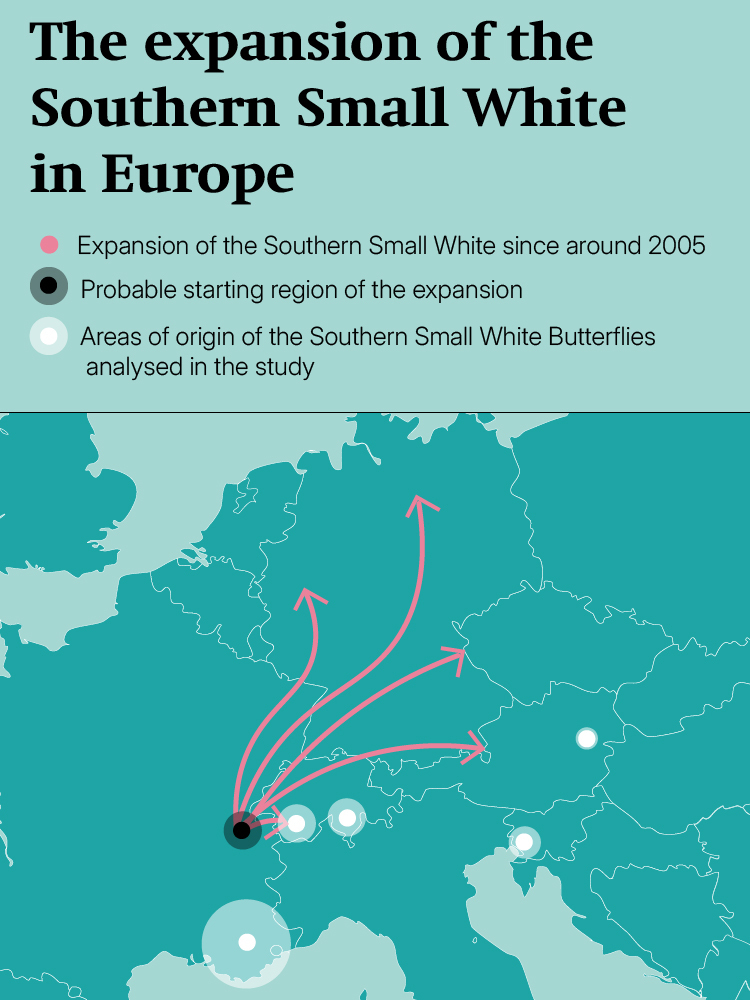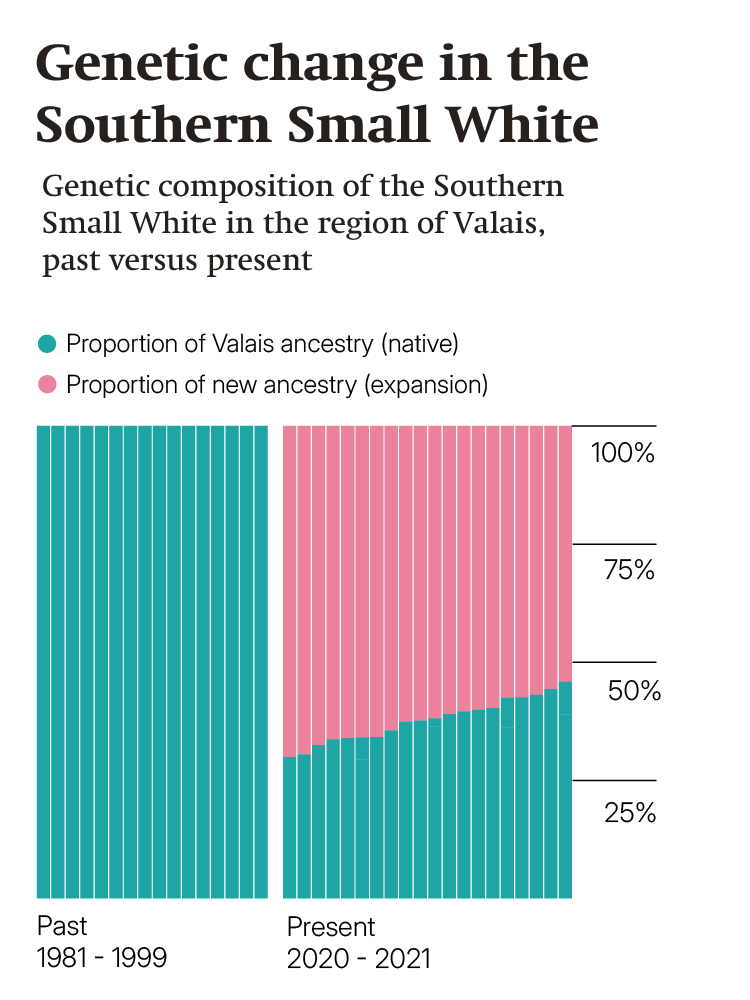It took a while for zoologist and lead author of the study, Dr. Daniel Berner from the University of Basel, to notice that a butterfly species that wasn’t local to his area had become established in his garden. Then, suddenly, he saw it everywhere: Pieris mannii – also known as the Southern Small White – with its wingspan of around four centimetres and white wings adorned with large black spots.
Until a few years ago, only a few small, localised populations of this principally Mediterranean species existed in Switzerland, in Valais and Ticino. Around 2005, the butterfly obviously began its journey north and east. "The animal has now been recorded on the shores of the North Sea, in the Czech Republic and Poland. The Southern Small White was first recorded in Mecklenburg-Vorpommern in 2020,” explains Prof. Dr. Peter Michalik from the University of Greifswald’s Zoological Institute and Museum.
Comparison with museum specimens
With its expansion, however, came a significant loss of genetic diversity. “We found that, as it invaded, the Southern Small White standardised local populations of its own species,” says study leader Dr. Daniel Berner from the University of Basel. Together with researchers from the University of Greifswald and the Senckenberg German Entomological Institute, Müncheberg, Berner has investigated how the butterfly’s expansion has impacted diversity within its own species. The researchers compared the genetic make-up of freshly caught butterflies with that of significantly older museum specimens, i.e. specimens that had been caught and preserved before the invasion began. They were able to show that the genetic composition of the researched local populations has changed considerably: a large part of the original genetic make-up has now been replaced with that of the expanding population.
“If we hadn’t made the comparison with the museum specimens, we wouldn’t have spotted this genetic change,” says Daniel Berner. For their analyses, the researchers were able to sequence butterflies from the collection of the Natural History Museum of Bern and therefore genetically characterise the insects. They were very lucky that, over the decades, the renowned lepidopterist (butterfly researcher) Heiner Ziegler had amassed an extensive collection of specimens of none other than the Southern Small White that they were able to use for their study.
Favourite garden plants
Urbanization is helping the butterfly to spread rapidly. The Southern Small White only rarely flies long distances; during its lifespan of approximately three weeks, it usually does not travel far from its birthplace, where the caterpillars’ favourite food plants also thrive – namely rocket and, above all, shepherd’s cress. The latter is particularly widespread in gardens in urban areas. Accordingly, the increasing expansion of urban areas has given the Southern Small White the opportunity to spread far and wide.
Moreover, five or six generations of Southern Small White are reproduced every year, not just one. “This species can therefore quickly build up large populations in a newly settled area, favouring the colonisation of new areas that are long distances apart,” Daniel Berner explains. It is very likely that the butterfly will expand further – provided that the plants it feeds on are available.
Expansion and genetic mixing – loss or gain?
From a conservation perspective, the expansion of the Southern Small White is a double-edged sword. As the species uses largely human-designed habitats in newly settled areas, it does not have to compete with indigenous butterflies. Moreover, expansion means that there is a much larger population of this butterfly species in general, which tends to reduce its risk of dying out. However, these positive aspects are offset by the disappearance of genetic diversity that had built up over the course of millennia: “Although it’s the fate of living things that some local groups can die out, what’s special about the situation facing the Southern Small White is that the loss of original population diversity is linked to the expansion of the urban environment – and is therefore caused by humans.”
The researchers do not yet know why the Southern Small White in particular has embarked on major expansion or where exactly this process began. “Presumably, nothing fundamentally new has happened on the side of the butterfly: so far, we haven’t found signs of major genetic change in the expansive population, and climate change doesn’t appear to play a key role in what is happening,” says Daniel Berner. The researchers now want to investigate these questions further.
Original publication
Lucas A. Blattner, Dustin Kulanek, Simona Ruffener, Heiner Ziegler, Hans-Peter Wymann, Martin Wiemers, Peter Michalik, Daniel Berner
Urbanization-associated range expansion genetically homogenizes a butterfly species
Current Biology (2024), https://doi.org/10.1016/j.cub.2024.09.006
Original media release
How a butterfly invasion minimizes genetic diversity
Further information
Research Training Group (DFG-RTG 2010) RESPONSE
Contact at the University of Greifswald
Prof. Dr. Peter Michalik
Zoological Institute and Museum
Loitzer Straße 26, 17489 Greifswald
Tel.: +49 3834 420 4099
michalikuni-greifswaldde



